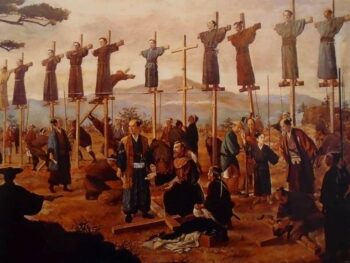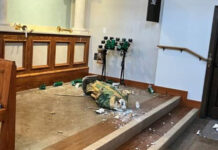Paul Marshall, Wilson Distinguished Professor of Religious Freedom at the Institute for Studies of Religion at Baylor University, recently penned an analysis of Christian persecution in Japan for Religion Unplugged.
Studies of Religion at Baylor University, recently penned an analysis of Christian persecution in Japan for Religion Unplugged.
His insights paint a tragic yet powerful picture of the persecution and survival of Christianity in Japan. Professor Marshall acknowledged that the ban of Christianity in Japan in the early 17th century, which lasted for nearly 250 years, is well documented by world and Christian historians.
This crackdown, fuelled by tactics involving trampling or standing on a “fumi-e” (i.e., a Christian image such as a cross, a picture of Jesus, etc.), led to underground and secret churches being established.
But Marshall added that the savage persecution of Christians in the 19th century is not as well known. In 1868, 3,394 Christians were taken from Nagasaki and exiled to Tsuwano in Shimane Prefecture. Many of these exiled Christians were confined and imprisoned in a sanjakaro (a 10-foot by 10-foot box), where they were often starved to death. A memorial and chapel have been built in Tsuwano to remember these tragedies. Marshall shared an inspiring story of a 6-year girl exiled to Tsuwano:
On the site is a small chapel with stained glass windows. One window tells the story of six-year-old Katarina Mori. “When she was dying of starvation, one of her captors brought her sweets, saying that he would let her have the sweets if she gave up her faith.” Katarina is reported to have replied, “Heaven tastes better.”
Katarina’s powerful story, occurring more than 150 years ago, is a powerful reminder of the persecution of Christians throughout Japan’s history and, ideally, an encouragement and inspiration to the relatively small number of Christians in Japan today (about 1% to 1.5% of the country claiming to be Christians), and to Christians worldwide. — International Christian Concern






